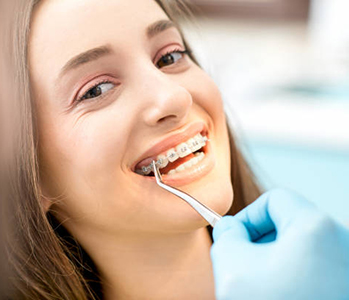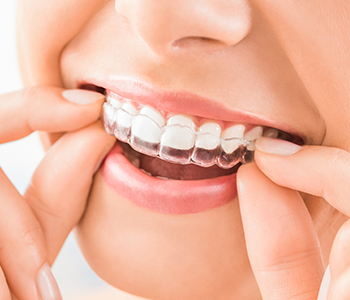Open any magazine or watch any movie and you’ll see pictures of people with perfectly straight, perfectly white smiles. Reality, however, is very different. If you look at people you interact with on a day to day basis, you’ll notice that very few of them have “perfect” smiles. The development of our teeth centers around functionality, not aesthetics, which means crooked teeth are more common than perfectly straight teeth. So, you may be wondering, “How do you get crooked teeth?” At the Smile Center in Buffalo, NY, we decided to delve into why some people have crooked teeth.
There are many causes for crooked teeth. Among them are:
Genetics
Just as your parents can’t control your eye color or hair color, they can’t control how your teeth will develop. Many people with crooked teeth inherited that trait from their parents.
Another reason teeth may come in crooked is the size of the mouth. If your mouth is on the smaller side, there may not be enough room for teeth to erupt, causing crooked or crowded teeth. Also jaw misalignment can also lead to overbite or underbite which can impact the upper and lower arches.
Habits

There are certain habits that can cause teeth to erupt crooked later in life. One of the most prevalent ones is thumb sucking or use of a pacifier (both of which are common infant habits for comfort or soothing). Other habits that can potentially contribute to jaw misalignment or tooth crowding are: frequent mouth breathing, reverse swallowing, and tongue thrusting. Since these habits are very common, many patients will wear a retainer after orthodontic care to keep teeth aligned despite these habits.
Injury
An injury to the jaw can cause teeth to shift out of place and even fall out. Some injuries can cause severe changes to the alignment of teeth. It’s always important to seek orthodontic care if you have experienced an injury to the jaw.
Health and other factors
The health of your primary teeth directly impacts the health of your permanent teeth. When baby teeth fall out or are extracted because of decay or injury, permanent teeth will begin to emerge. Consider baby teeth as anchors or space holders for permanent teeth. When these space holders are no longer present, permanent teeth could erupt out of place.
716-634-4090
OR
Treating crooked teeth
Once the team at Smile Center has performed a thorough evaluation of any orthodontic issues, a diagnosis can be made followed by the development of a treatment plan. Treating crooked teeth depends on the degree of the issue. Minor issues can often be corrected with the use of a retainer. More complex issues may require the use of traditional braces or Invisalign aligner trays.
Traditional braces
Traditional braces use a series of brackets that are adhered to the front of teeth and connected via wire. The wire is tightened at specific intervals to move the teeth into proper alignment.
Invisalign

Invisalign uses a series of clear, plastic trays that are custom fabricated based upon impressions of your teeth. The impressions are used to map out the movement of your teeth. Trays are swapped out every two weeks and gradually shift teeth into proper positions.
Determining whether you want traditional braces or Invisalign can often be a personal decision. Some patients with severe misalignment may not be a candidate for Invisalign.
When should patients be evaluated?
Most orthodontists recommend that patients receive their first orthodontic evaluation between the age of seven and eight. Beginning treatment early can help ensure a more positive outcome with less expense. Early intervention can help improve crooked teeth and crowding before it becomes a more serious problem.
If you are in the Buffalo, NY area and you, or your child, needs an orthodontic evaluation for crooked teeth, call the team at Smile Center today at . We’re here to help our patients enjoy all the benefits of a healthy, straight smile.


